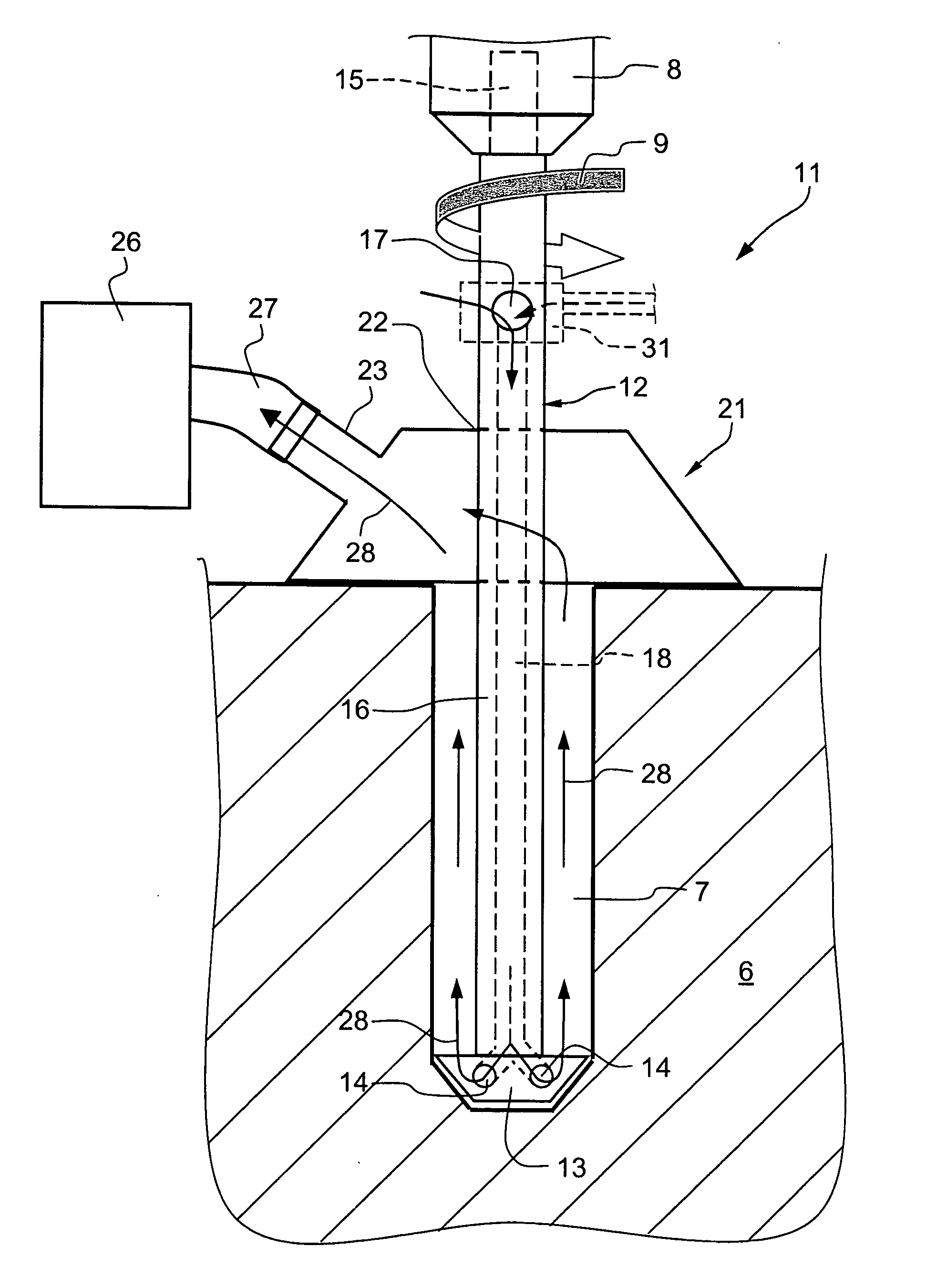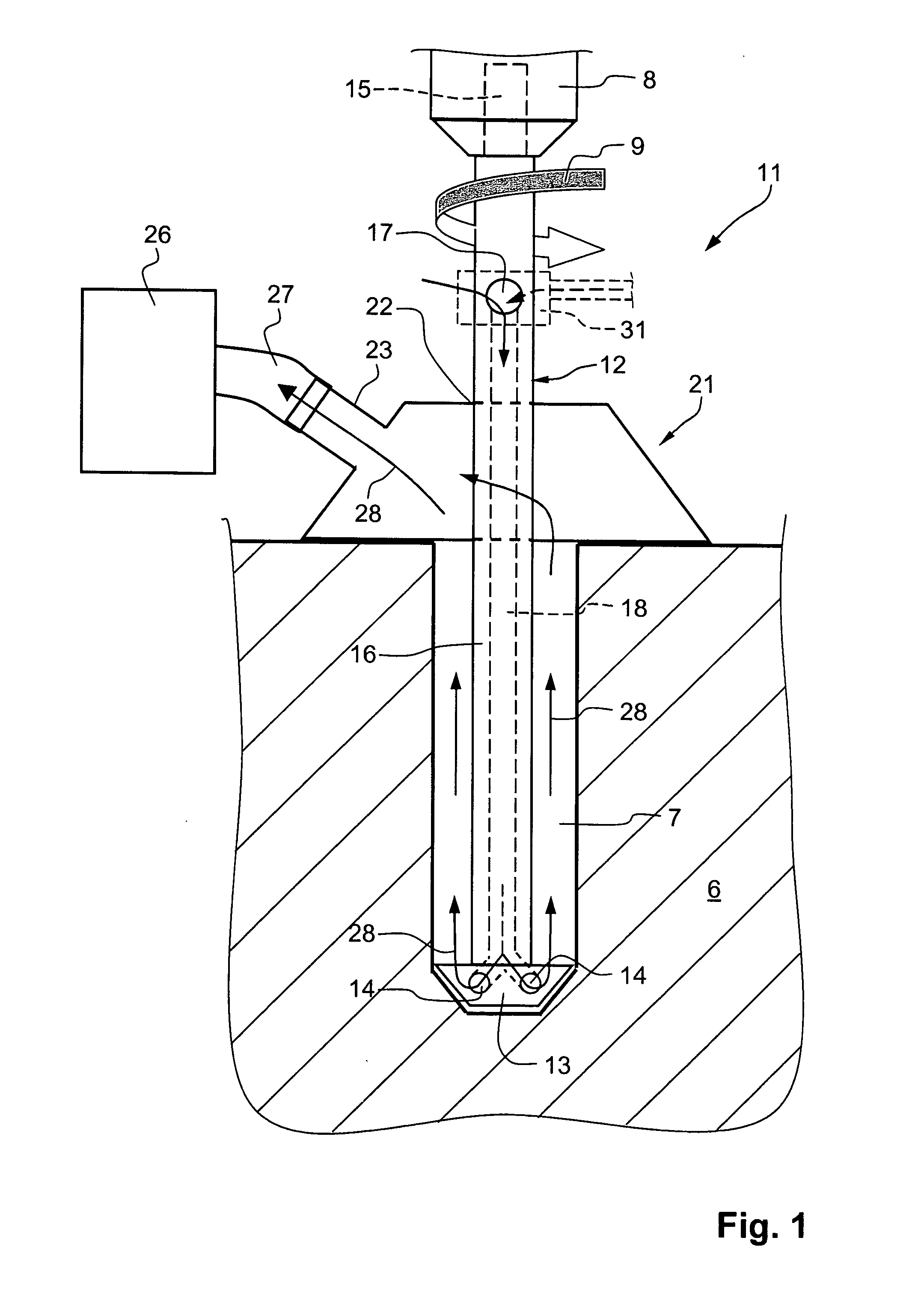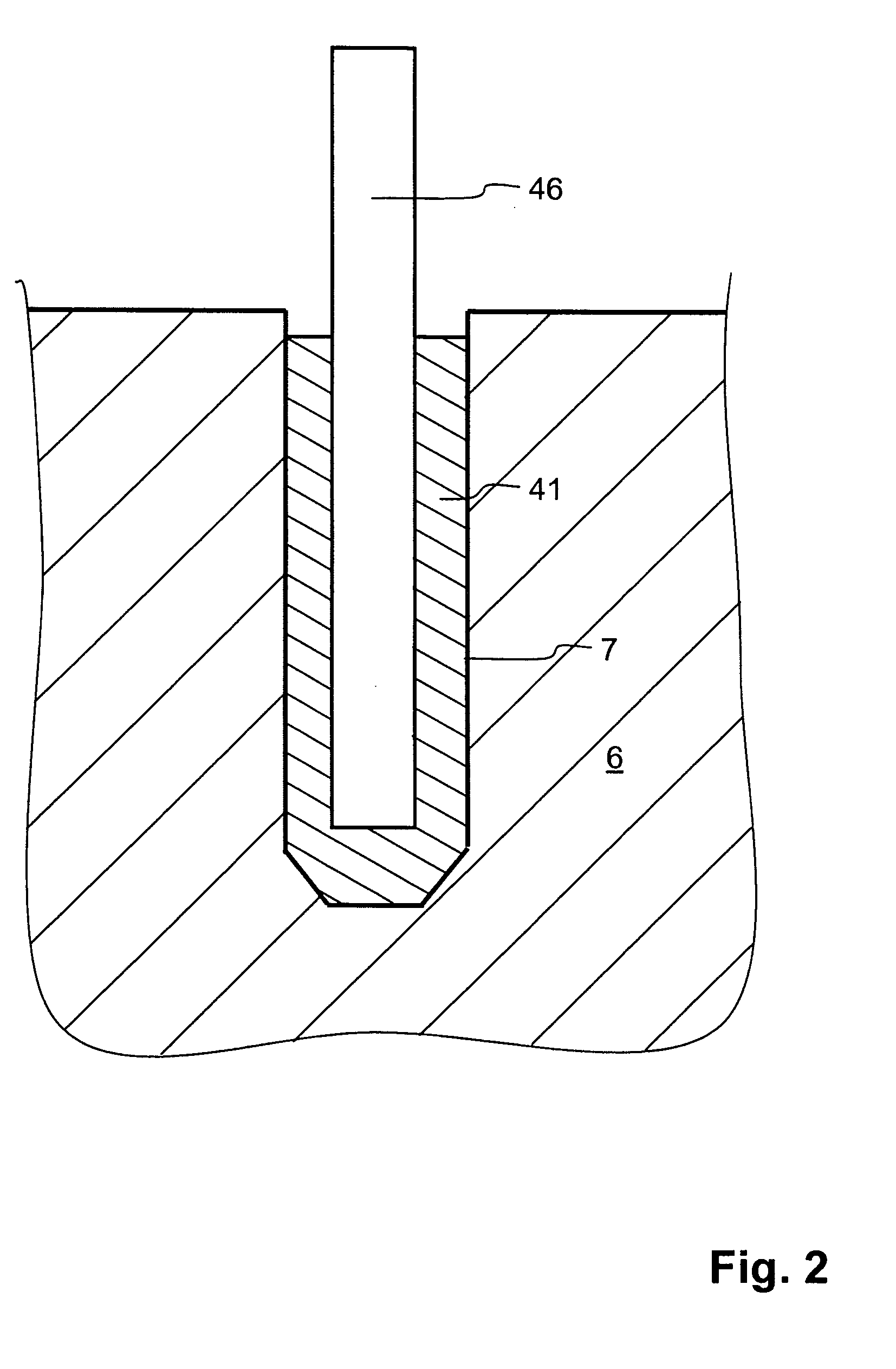Method of anchoring fastening element
a fastening element and fastening technology, applied in mining structures, building repairs, manufacturing tools, etc., can solve the problems of not enabling satisfactory adhesion of mortar to the wall, and achieve the effect of reducing the number of drilling holes, and eliminating a separate and expensive cleaning procedur
- Summary
- Abstract
- Description
- Claims
- Application Information
AI Technical Summary
Benefits of technology
Problems solved by technology
Method used
Image
Examples
Embodiment Construction
[0025]A device 11, which is shown in FIG. 1, is used for carrying out a process according to the present invention for forming a cleaned borehole 7 in a constructional component 6, e.g., in a concrete ceiling for chemically anchoring a fastening element 46 in the constructional component 6. The device 11 includes a hollow drill 12, a suction hood 21, and a vacuum source 26, e.g., a vacuum cleaner.
[0026]The hollow drill 12 has a shaft 16 having, at its first, front end, a drilling head 13 with outlet openings 14 and at its other rear end, a shank 15 for insertion of the hollow drill 12 in a chuck 8 in a percussion-rotary drilling tool, not shown in the drawing.
[0027]At a distance from the shank 8, there is provided an inlet opening 17 that opens radially outwardly and is connected with the outlet opening 14 in the drilling head 13 by a circumferentially closed elongate channel 18 provided in the shaft 16.
[0028]The suction hood 21 is bell-shaped and is provided with a through-opening ...
PUM
| Property | Measurement | Unit |
|---|---|---|
| self-hardenable | aaaaa | aaaaa |
| adhesion | aaaaa | aaaaa |
| hardenable | aaaaa | aaaaa |
Abstract
Description
Claims
Application Information
 Login to View More
Login to View More - R&D
- Intellectual Property
- Life Sciences
- Materials
- Tech Scout
- Unparalleled Data Quality
- Higher Quality Content
- 60% Fewer Hallucinations
Browse by: Latest US Patents, China's latest patents, Technical Efficacy Thesaurus, Application Domain, Technology Topic, Popular Technical Reports.
© 2025 PatSnap. All rights reserved.Legal|Privacy policy|Modern Slavery Act Transparency Statement|Sitemap|About US| Contact US: help@patsnap.com



